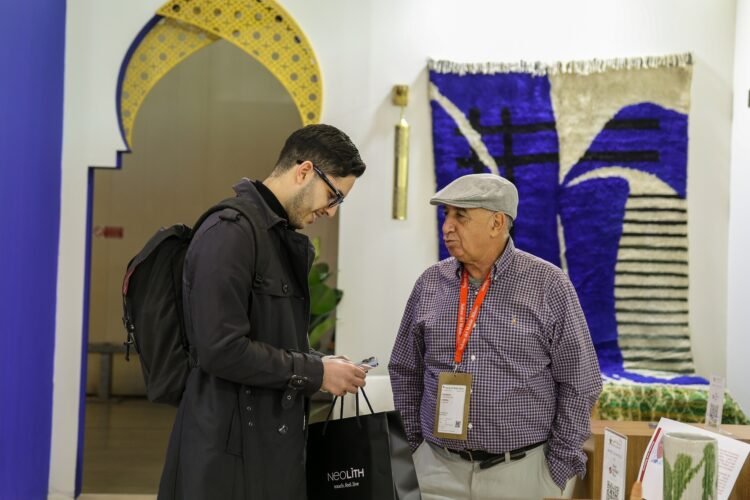How Morocco’s rural artisans are crossing the digital divide ~ turning heritage crafts into engines of inclusion and sustainable growth.
Keywords: e-commerce Morocco, digital inclusion, rural artisans, handmade marketplace Africa, crafts and cooperatives, social economy Morocco
From Souk to Screen: A New Chapter for Moroccan Craftsmanship
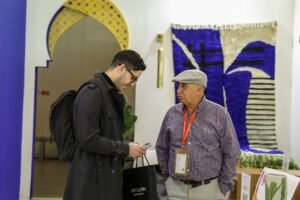
In Morocco’s hills and coastal towns, artisans continue to shape clay, weave wool, and embroider silk as their ancestors once did. Yet today, their market no longer stops at the village souk. With a smartphone and a modest internet connection, a craftswoman in Tameslouht or Safi can reach a buyer in Paris or Dakar.
E-commerce is quietly redrawing the geography of opportunity. Still, the path to full digital inclusion for artisans remains uneven. Many rural creators stand at the margins of the digital economy ~ rich in creativity, but constrained by limited connectivity, training, and visibility. As the World Bank (2024) notes, the rural–urban digital divide persists, with only 67 % of Morocco’s rural population having regular internet access compared to over 90 % in cities.
The Digital Divide in the Handmade Sector
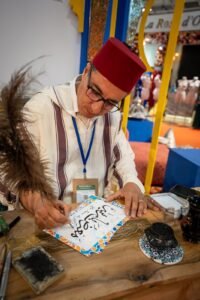 For decades, Morocco’s artisan economy has sustained over one million livelihoods (Ministère du Tourisme et de l’Artisanat, 2023). However, only a fraction of these artisans have integrated digital sales channels. The reasons are structural: low digital literacy, expensive logistics, and fragmented online visibility.
For decades, Morocco’s artisan economy has sustained over one million livelihoods (Ministère du Tourisme et de l’Artisanat, 2023). However, only a fraction of these artisans have integrated digital sales channels. The reasons are structural: low digital literacy, expensive logistics, and fragmented online visibility.
A UNCTAD (2023) report on e-commerce in developing economies emphasizes that the digital economy thrives where three conditions meet ~ affordable access, trusted payments, and relevant local platforms. In rural Morocco, these are still in progress. While digital payments through platforms like MarocPay and CIH Pay are expanding, confidence in online transactions remains low, especially among older artisans.
Public Policies and Institutional Frameworks: Seeds of Inclusion

Since the early 2000s, Morocco has placed the social economy at the center of its development agenda. The Initiative Nationale pour le Développement Humain (INDH), Plan Maroc Vert, and now Stratégie Génération Green 2030 all highlight cooperatives and small producers as key levers for inclusive growth.
The Programme d’Appui à la Digitalisation des Coopératives launched in 2022 by Enabel Belgique Maroc and the Office du Développement de la Coopération has already trained hundreds of cooperative members in basic e-commerce management. Meanwhile, the OECD (2024) notes Morocco’s growing recognition of “digital inclusion as a pillar of territorial equity.”
These initiatives signal a new institutional awareness: digital transformation is no longer a luxury for artisans ~ it is a matter of cultural sustainability and economic sovereignty.
When Tradition Meets Technology: Local Journeys of Change
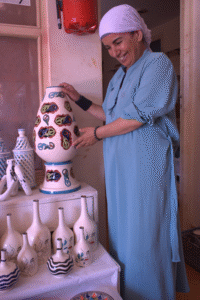
In Safi, women potters of Coopérative Cérame Féminine recently began photographing their creations with smartphones, uploading them to WhatsApp groups and Facebook Marketplace to reach new buyers. “It started with one sale to Casablanca,” recalls the cooperative’s president, “then friends shared our page, and we began receiving orders from abroad.”
Similar stories echo across Morocco: the embroidery cooperatives of Essaouira, wool weavers of Azilal, and basket-makers of Oualidia are cautiously exploring digital storefronts.
Across Africa, inclusive marketplaces illustrate what’s possible. The Anou in Morocco empowers artisans to manage their own logistics and pricing online. Afrikrea, born in Côte d’Ivoire, connects over 8 000 African creators to global customers through an integrated payment system. In Kenya, Made in Kenya promotes small producers through government-backed online fairs. These platforms prove that local production and global visibility can coexist — provided artisans have the digital tools to claim their own narrative.
Challenges That Persist: Literacy, Logistics, and Trust
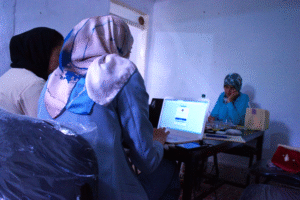
Yet, beneath these success stories lie systemic barriers. The EcomConnect Morocco (2023) survey found that 72 % of rural artisans still depend on intermediaries to reach digital buyers. Only 28 % manage their own social-media pages or online shops. Reasons include:
- Limited digital literacy: many artisans can use WhatsApp but not e-commerce dashboards.
- Logistical bottlenecks: courier services often bypass remote villages, inflating costs.
- Payment barriers: mistrust in online transactions and low bank account ownership (especially among women).
- Linguistic gaps: many digital interfaces remain monolingual in French or English, excluding Arabic- and Tamazight-speaking artisans.
Addressing these requires more than infrastructure — it demands culturally adapted training and local mediation models that blend trust, language, and technology.
Inclusive E-Commerce Models Emerging
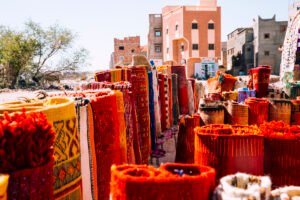
Across Morocco and Africa, a quiet movement of inclusive commerce is forming. Platforms such as Anou, Afrikrea, or the ads portal for Ouafra.com position artisans not merely as sellers but as digital citizens with agency. They provide catalog creation tools, fair-commission systems, and storytelling formats rooted in cultural authenticity.
These models differ from conventional marketplaces by emphasizing digital accompaniment rather than pure transaction. For example, Anou trains artisans in product photography and export logistics, while Ouafra integrates service design (visuals, catalogues, and language adaptation) to help cooperatives professionalize their online presence.
Beyond Morocco, Afrikrea demonstrates the scalability of such inclusion: in 2024 it reported over $10 million in transactions, 80 % of which directly benefited female artisans (Afrikrea, 2024).
Together, these ecosystems redefine what e-commerce means in African contexts — not just buying and selling, but sustaining cultural economies.
The Road Ahead: Policy and Partnership Recommendations
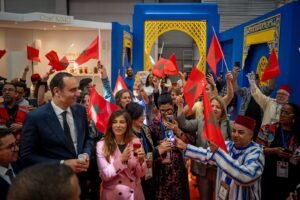
Building a digitally inclusive future for rural artisans requires joint commitment from multiple actors:
- Public Policy Support – Expand programs like INDH Digital Hubs and subsidize training in rural provinces with gender-sensitive modules.
- Financial Mechanisms – Create micro-credits for digital tools (smartphones, photography kits, packaging).
- Education & Mentorship – Partner with universities, incubators, and NGOs to form “Digital Ambassadors” networks mentoring cooperatives.
- Logistics Integration – Support partnerships between local delivery startups and cooperatives to reduce costs and ensure traceability.
- Regional Collaboration – Strengthen links among African marketplaces to foster intra-African trade of handmade goods, echoing AfCFTA’s inclusive trade vision (2023).
Conclusion: Towards a Connected Heritage
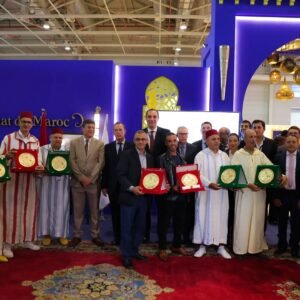
E-commerce inclusion is not just about selling crafts online; it is about rewriting the relationship between heritage and modernity. When a woman in Essaouira uploads her embroidery to an international marketplace, she is not leaving tradition behind — she is translating it.
Morocco stands at a promising crossroads. The artisan who once relied on seasonal tourists can now reach a global community that values authenticity and social impact. What remains essential is to ensure that this transition is guided by fairness, education, and shared value — so that every handmade piece sold online continues to tell the story of the hands that shaped it.
References
- UNCTAD (2023). E-commerce and Development Report: Digital Inclusion in Emerging Economies.
- World Bank (2024). Digital Morocco 2030 — Progress on Connectivity and Inclusion.
- OECD (2024). Social Economy and Territorial Equity in North Africa.
- Ministère du Tourisme et de l’Artisanat (2023). Rapport Annuel sur l’Artisanat.
- Enabel Belgique Maroc (2022). Programme d’Appui à la Digitalisation des Coopératives.
- Afrikrea (2024). Annual Impact Report.
- EcomConnect Morocco (2023). Digital Commerce Survey for Artisans.

 Art
Art  Bijoux
Bijoux  Jouets et divertissements
Jouets et divertissements  Objets de collection & Vintage ou Antique
Objets de collection & Vintage ou Antique  Produits écologiques
Produits écologiques 